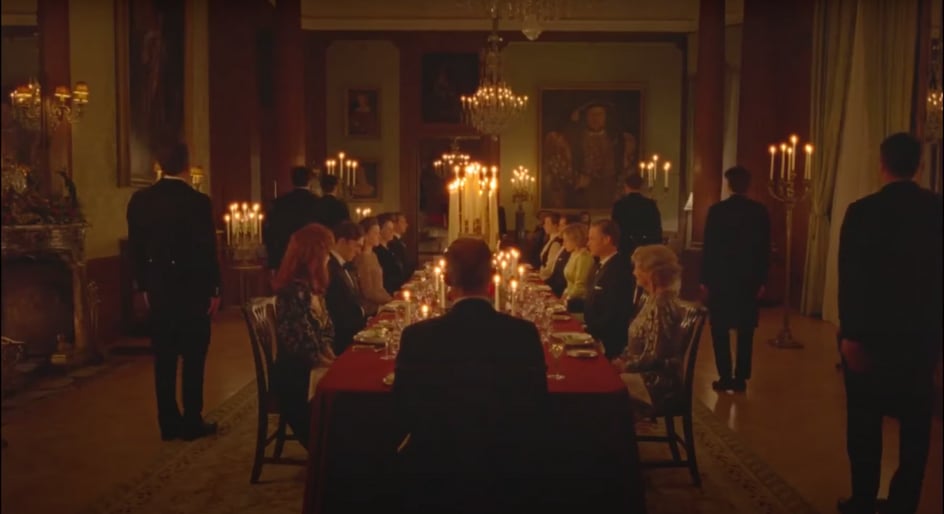
Feb 25, 2022
When you break it down, video lighting equipment for production can really be sorted into two main categories:
1. Gear that is intentionally set up out of frame and
2. gear that is visible in-frame.
The first category includes things like motivated lighting, softbox lighting kits, and bounce boards. With this type of gear, you’re able to add and shape light in strategic ways so that your viewers only see a well-lit scene — not all of the equipment behind your camera.
However, there are times when it’s valuable and even necessary to stage light sources front-and-center in the camera frame. This is where the second category — or more specifically practical lighting — comes in.
In this blog, we’ll share everything you need to know about staging and enhancing practical lighting in YouTube videos, films, and other projects. So let’s start with the basics.
What is practical lighting?
Practical lighting refers to any and all light sources that are visible in a scene. This includes candles, tungsten lights, lamps, and even natural light coming in through a window.
As you might guess from the name, this type of light serves a practical purpose but doesn’t always emit a ton of light on its own. For example, you might stage a scene with a few candles to brighten up the room and set the ambiance, but these candles will only emit light and cast shadows on whatever is in close proximity to them.
To enhance practical lights, you have to get creative and use additional softbox lights, portable LED lights, and other equipment behind the scenes of production.
Later on, we’re going to break down how filmmakers use practical lighting in films like Spencer and Minari. But for now, there are a few more things you should know about this type of lighting.
Practical lighting 101
1. Audiences notice when lighting setups are unrealistic
If the lighting in a scene is distracting or unrealistic, you’re bound to lose the attention of your audience. Even if it’s done subconsciously, viewers recognize when something is visibly off about a scene. (That’s why the “uncanny valley” effect exists.)
Viewers should be able to connect the dots of where the light in a scene is coming from — a window, a lamp, an open doorway, etc. And all of the light sources should emit light in a realistic way.
For example, moonlight or sunlight coming through a window should shine down into a room — not straight out. So, if you’re blocking out a window with duvetyne to shoot a night scene during the day, you’ll need to rig your motivated lights and adjust the lighting settings so that you can recreate that moonlight look.
Here’s an example of how Heather from Fellow Filmmaker did exactly that:
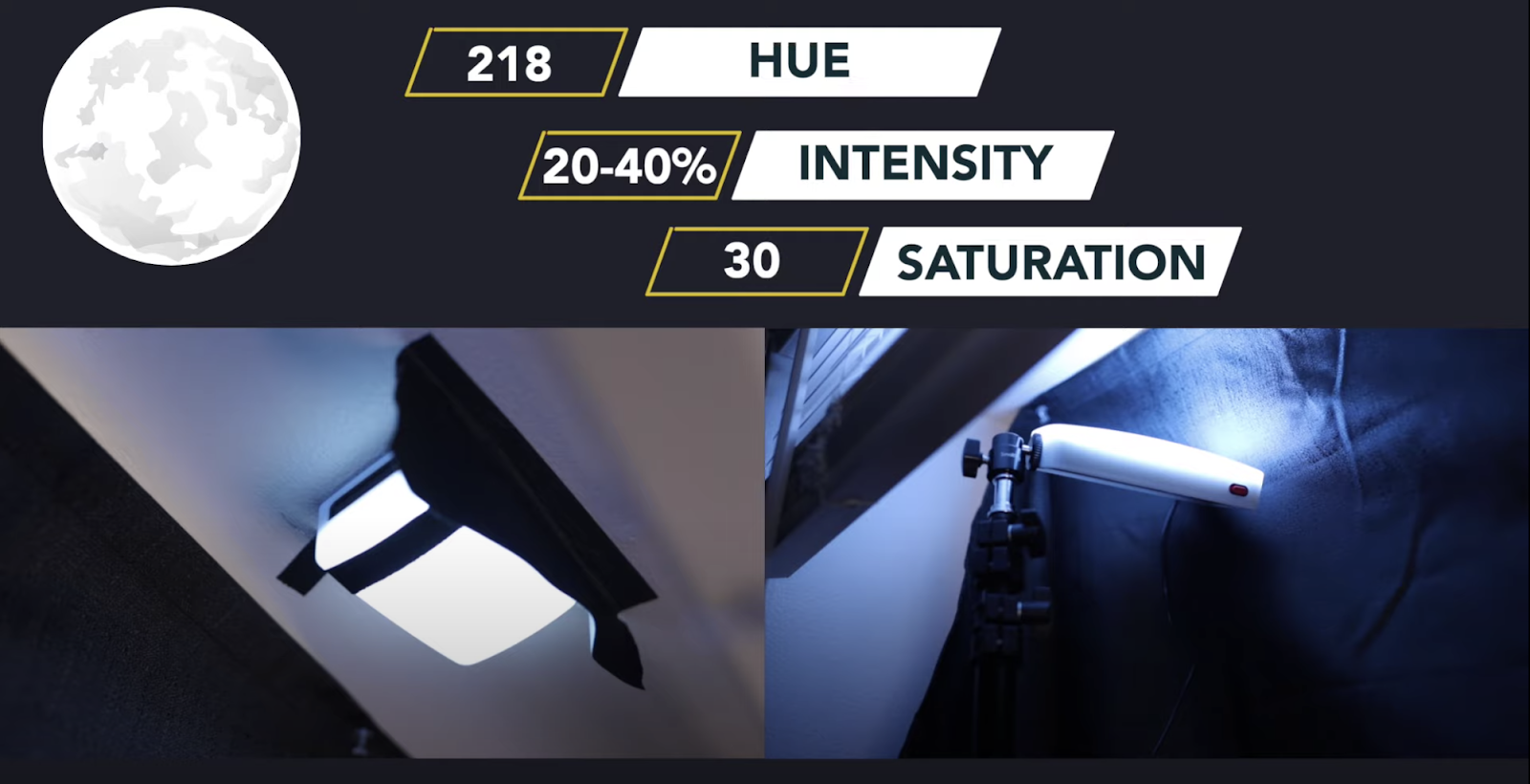
You can learn more about her process here, but the main takeaway is that it’s necessary to use and enhance practical lights in a believable way. Not doing so can make any project seem more amateurish than cinematic, which is never the end goal.
2. Multiple practical lights can be present simultaneously
Getting the perfect practical lighting setup in a scene isn’t always easy to do, and that’s because it’s common to work with multiple practical light sources at once.
Let’s say you set up two table lamps and one floor lamp in a room that also has two windows. When you turn on all of the lights, you might find that there still isn’t enough light in the scene — so what do you do?
One solution is to set up motivated lighting behind the camera or hidden away in the room to enhance the light coming from the practicals. However, when you do that, you might find that this extra light is unintentionally spilling over onto areas where the light shouldn’t reach.
It’s a process of trial and error to make sure that this doesn’t happen. You can use foam boards and clamps to help shape the light, and you can also use color gels to prevent mixed color temperatures.
While it may take a few tries to get it right, you’ll get a better (and more realistic) end result when you take time to experiment with practical lighting and motivated lighting.
3. Practical lighting serves a thematic and aesthetic purpose
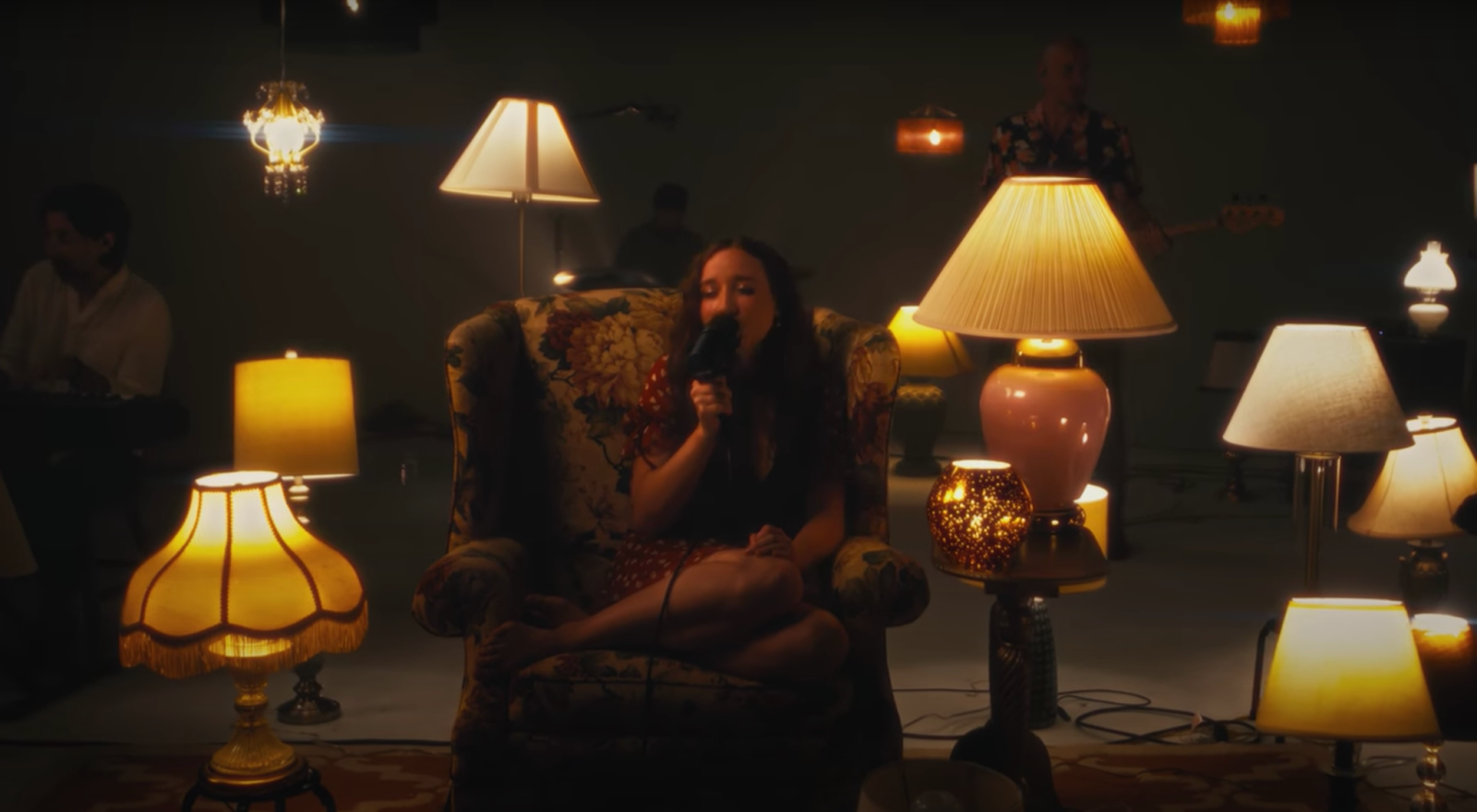
Practical lights are a part of production design. Sometimes, they are added to a scene to make a set seem lived in — more like an actual home, office, etc. Other times, they are used to make a thematic and aesthetic statement.
The above still from Jessie Villa’s “A Dream” music video is a prime example of how practical lights like lamps can create a warm ambiance, enhance a specific feeling or mood, and add more visual appeal to a scene.
Ultimately, what this really means is that you have options. You can use practical lighting minimally or extravagantly, and there’s always an opportunity to experiment with this lighting in new and creative ways.
4. Practical lighting gives flat backgrounds more dimension
Let’s say that you’re filming a talking head video — whether as a YouTuber, filmmaker, or in-house creative. By staging practical light sources in the background of your shot, you can add dimension and visual interest to an otherwise flat background.
YouTuber Ben Johnson is known for rigging his video lighting in creative and strategic ways, and in the image below, you can see how he incorporates practical lights into this setup:
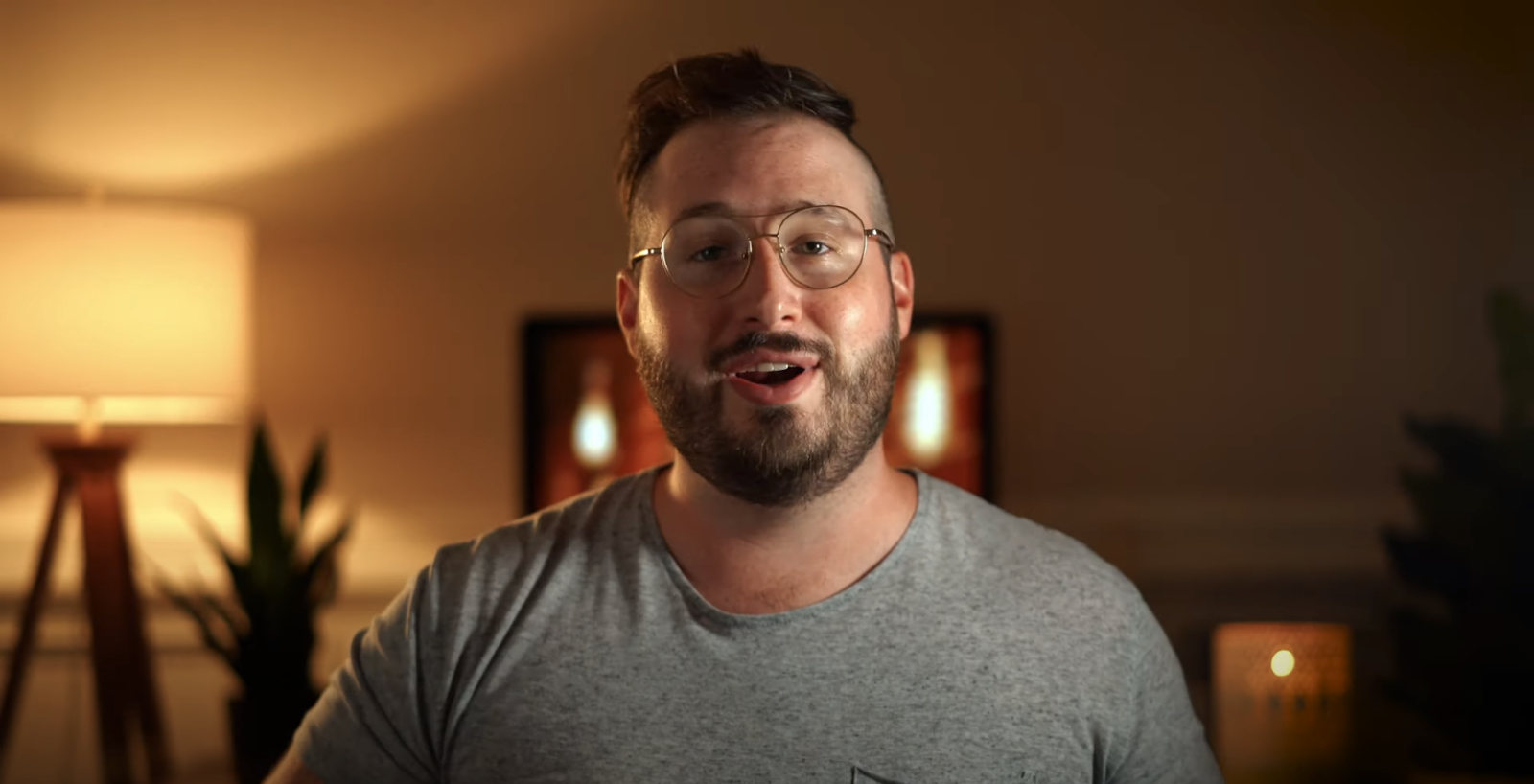
Not only do these practical lights add warmth to the shot, but they also create more separation between the subject and the background.
By using light sources like these, you can get great quality lighting even if you don’t have hundreds of dollars to spend on new gear.
Examples of practical lighting in film
Now that we’ve covered some practical lighting basics, let’s take a closer look at how (and why) cinematographers use this type of lighting in subtle and not-so-subtle ways.
While there are tons of great film examples out there, the films we’ll be looking at are Spencer, Don’t Look Up, Minari, and Midsommar.
Spencer (2021)
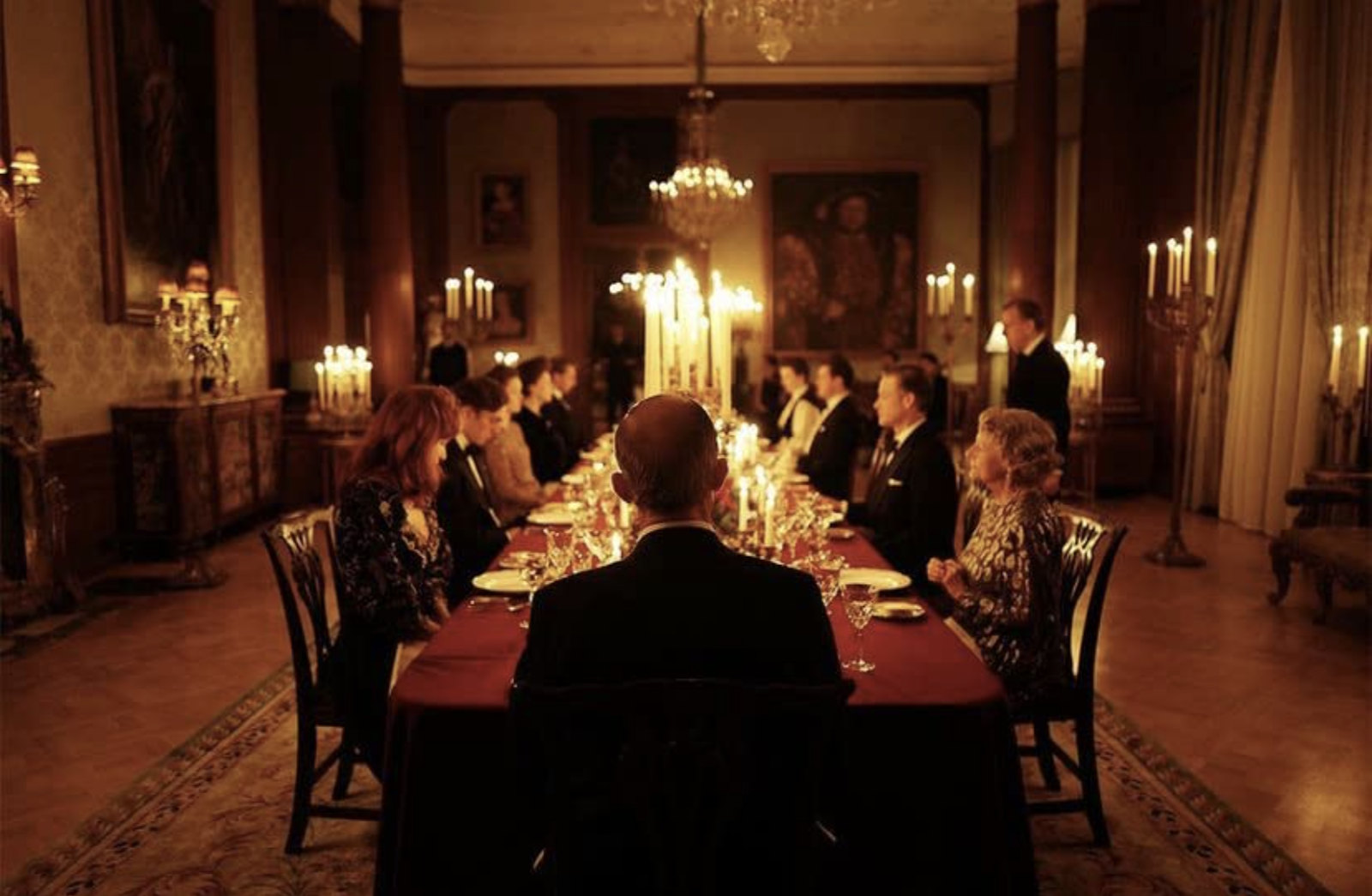
Image source: IMDb
This scene from Spencer is a practical lighting masterpiece, and it just takes one look at the still above to see why.
Dozens of candles were placed strategically throughout the room to provide an even spread of light and create realistic shadows on the walls, furniture, and actors’ faces. As you watch the scene, there’s no indication or clue that any other production lights were used — but that is, of course, the beauty of motivated lighting and movie magic.
Don’t Look Up (2021)
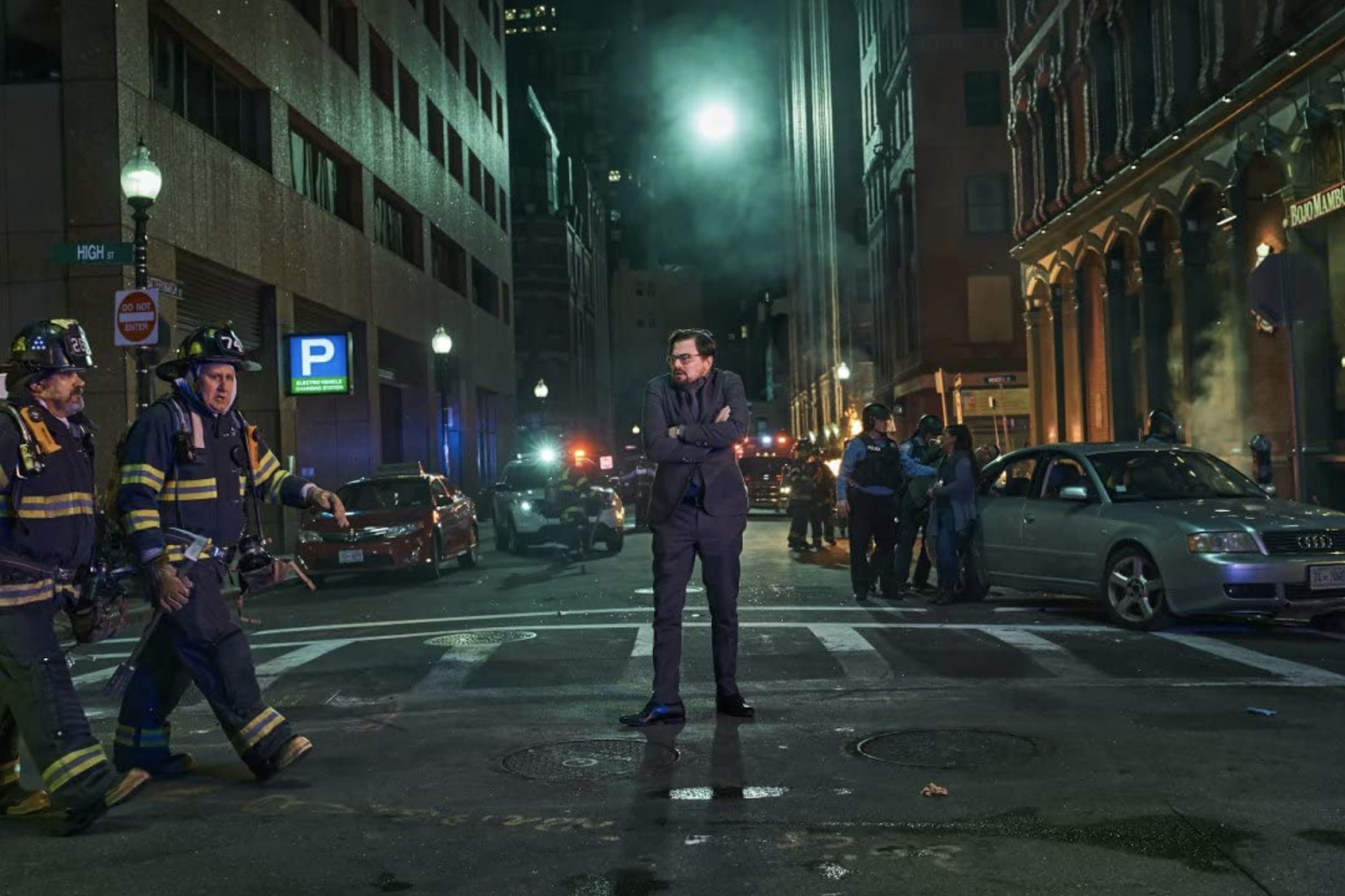
Image source: IMDb
As you look at this still from Don’t Look Up, pay attention to how all of the practical light sources work together in the scene: the street lights, car headlights, emergency lights, neon signs, moonlight, etc.
Leonardo DiCaprio’s character and the firemen nearby are well lit by what the audience can assume is a streetlight. At the same time, the moonlight functions as a hairlight that casts a shadow down in front of DiCaprio and the other actors and objects in the scene.
Minari (2020)
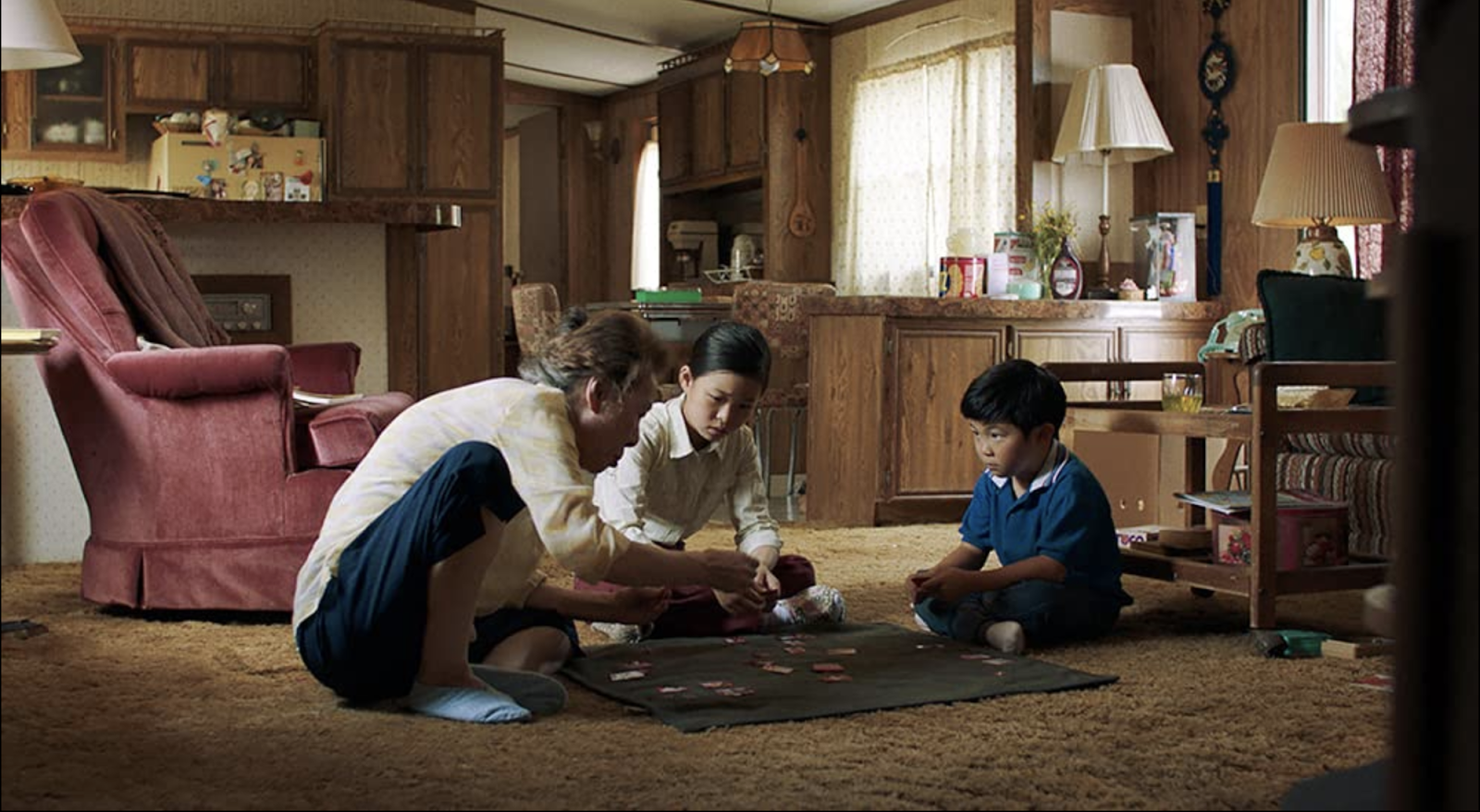
Image source: IMDb
This still from Minari is a great example of how cinematographers stage practical lights around a set but always consider the believability factor. Here’s what we mean:
Even though there are at least four lamps in this room, none of these light sources are in use. Instead, the entire room is filled with natural light that comes in through the windows.
If the cinematographers had chosen to turn on all of the indoor tungsten lights too, the scene wouldn’t look natural. (Who keeps all of the lights on in their home, especially in the middle of the day?)
In this case, the lamps are being used as set props instead of sources of practical light.
Midsommar (2019)
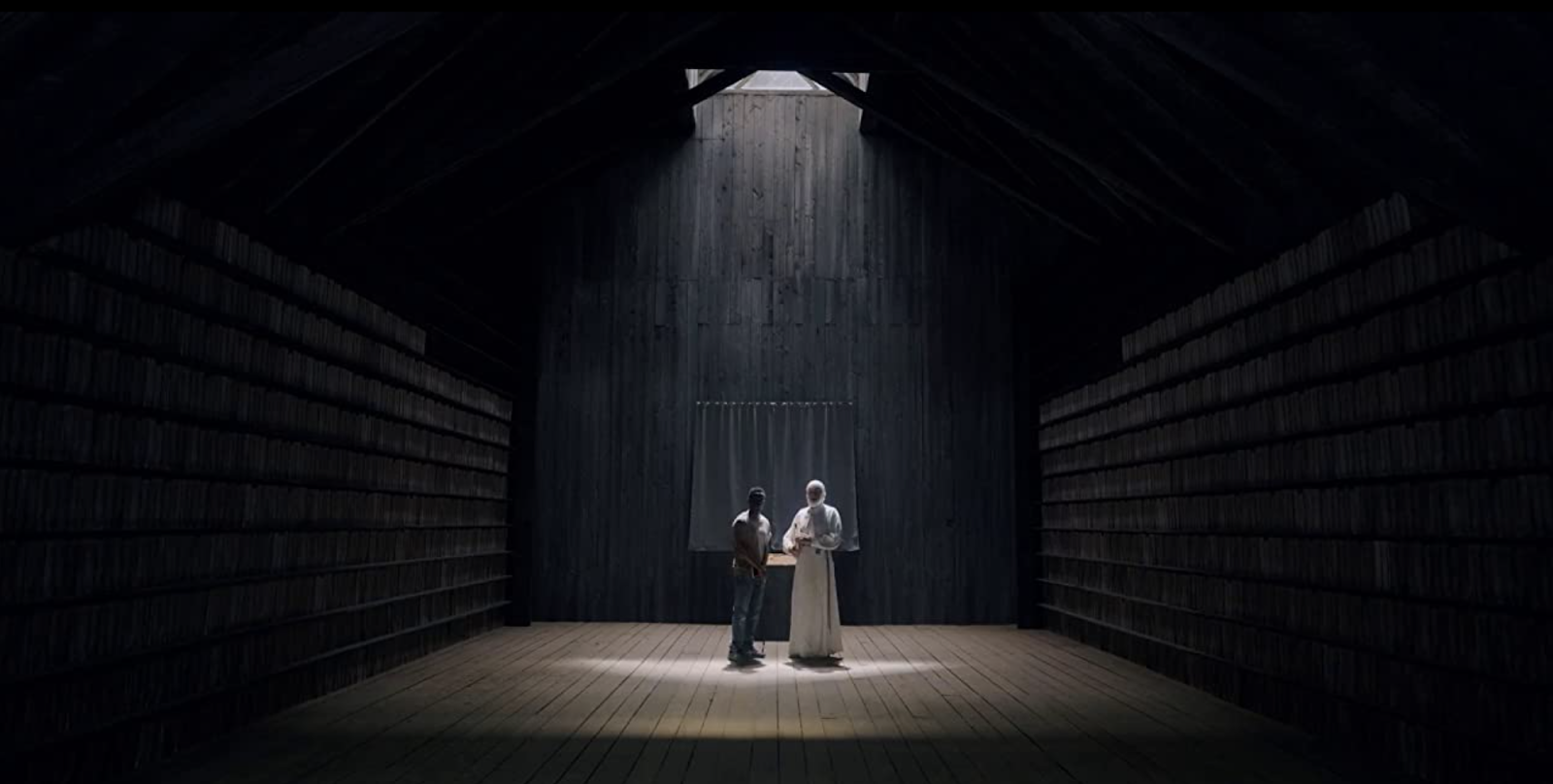
Image source: IMDb
Like the previous scene from Minari, the cinematographers exclusively use natural lighting as the practical lighting for this scene from Midsommar — just in a much more haunting way.
Even if you don’t know what this film is about, one glance at this image is bound to send shivers down your spine. The extreme contrast between light and shadows; the lone figures looking at you (the viewer) expectantly; the enclosed space — it doesn’t exactly evoke the same homey feeling as the scene from Minari, but the use of lighting is still powerful.
Practical lighting in this scene — and the film as a whole — is staged so that intense moments feel even more intense to the audience. It’s a storytelling tool that can either put audiences at ease…or in a state of unease.
By studying the practical lighting in this film and others, you can see how this type of lighting can be used in any genre of film or video to create a truly powerful visual impact. And by applying the lessons shared in this blog, you can strategically use practical lighting to give your projects a more cinematic feel.
Further reading
Honing your practical lighting skills is important, but this guide has highlighted just one of many techniques that are worth perfecting. If you’re looking for even more lighting and production-related content, check out these articles from the Soundstripe blog: